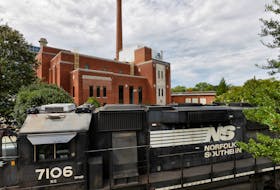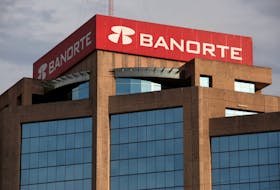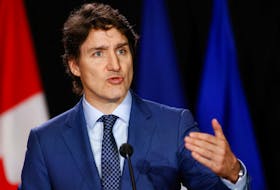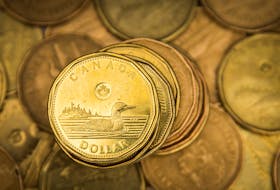Brent crude prices (all prices here in U.S. dollars) have risen over the past few months, moving from about $62 per barrel to reach over $80 per barrel on Thursday, for the first time since 2014.
The price is now well above the $63-per-barrel price referred to by the Liberals on March 27, budget day in Newfoundland and Labrador.

But it’s important to keep in mind that the $63 price used to establish the provincial budget is an expected average oil price for the year.
Budgets don’t get adjusted based on a week’s price, or even a month’s. The next reassessment and potential for oil prices to be brought into the government’s budget plans will be the mid-year update, in late fall.
Asked about recent prices, Finance Minister Tom Osborne told The Telegram current price peaks are not a surprise.
“We knew that going into budget, that the short-term forecasts were going to be considerably better than $63,” he said.
But there’s more of the year to consider.
“We wanted to be cautious in our estimate of oil pricing, so we didn’t do as previous administrations have done and forecast $120 per barrel (average for the year) when there’s absolutely no chance that it’s going to be at that on a 12-month average. It might make your books look good on budget day, but there’s no chance of reaching it. We didn’t want to do that. We wanted to be cautious in estimating the barrel of oil, because it is volatile,” Osborne said.
Brent crude prices averaged over $80 a barrel in 2011, 2012, 2013 and 2014, with the highest yearly average being $111.63 in 2012.
In fiscal year 2014-15, the province’s forecasted average $105 oil price led to a hard, mid-year update in the midst of an oil price slide, with the government stating it expected just a $63-per-barrel average for the final four months to the next provincial annual budget day.
The price of oil is an important factor in determining oil royalties to the province, but not the only one. Production rates from the province’s offshore oil projects play an important role, as does the cross-border exchange rate.
For the current fiscal year 2018-19, it’s estimated a $1 difference in the average oil price for the year above the forecasted price will equal a $22.7 million upswing in available oil royalties. Every $1 below the estimated average oil price is expected to result in $21.6 million less for the province.
Similarly, for every one-cent difference in the exchange rate, there’s a $17-million to $18.5-million swing in royalties expected.
(NOTE: Update on May 20, 2018 to correct figures for changing benefits to the province, in the case of an above or below-estimated final average oil price for the year, or a difference in exchange rate. Figures originally used were in error, being from last year's budget information. The Telegram regrets the error.)








